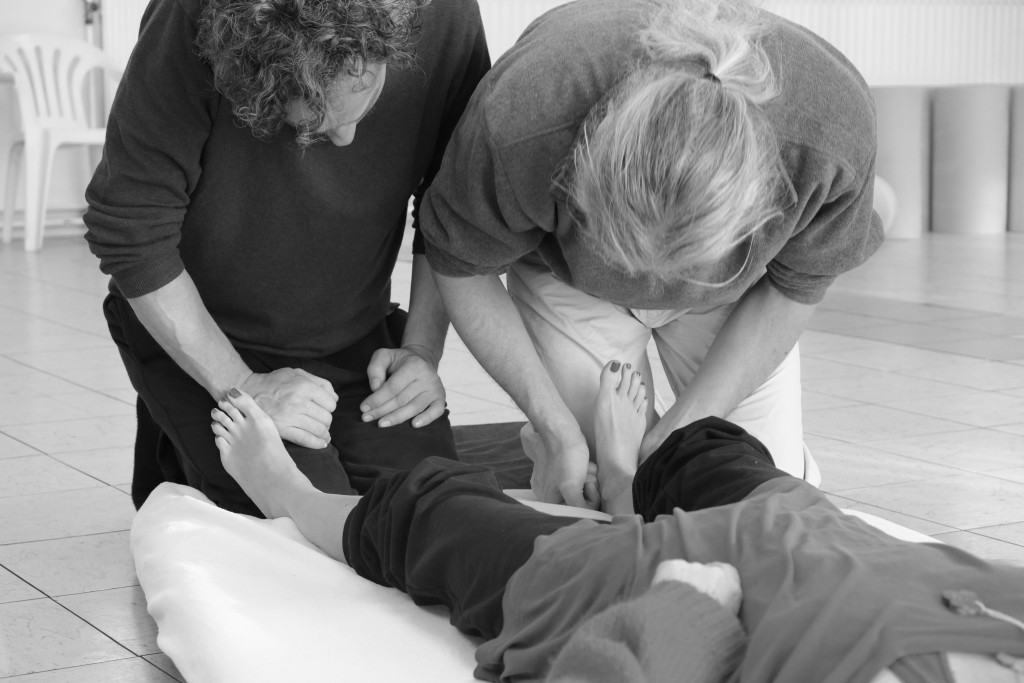Postural Integration® is based on the insights stemming from pioneers of the beginning of the 20th century like Szandor Ferenczi, Georg Groddeck, Wilhelm Reich and others who found that emotional relief and integration can be obtained through massage and other forms of touch, play and symbolic interaction. The specialised deep tissue touching, as developed by Jack Painter, Ph.D. is strongly based on the innovations of Ida Rolf,PhD, the creator of "Structural Integration" (also known as the Rolfing-method). The layers of myofascia (a connective tissue surrounding muscular tissue) in the body are envisioned in three depths/layers of work: superficial, intermediary deep, and deep.
The body’s network of FASCIA (the most abundant tissue in the body) that extends from the head to the toe, is obvious in anatomical dissection as the fibrous muscle envelopes which merge into tendons and bone. The skeleton is literally floating in connective fascia tissue which forms an intricate web that goes all the way down to the subcellular level, appearing as integrins, which are thin, long rodlike structures that are in constant interplay with the forces of expansion and contraction, communicating on the intra- and extra-cellular web. At that level, integrins let us know where we are in space and time and all that this entails—encounters with stairs and chairs, friend or foe, weather systems, and even the cosmos as a whole. The work with the network of fascia is organized around the release of segmental armouring (7 segments as described by W. Reich) in twelve paradigm sessions. In particular the emphasises is on the importance of integration and balance in people's lives.





